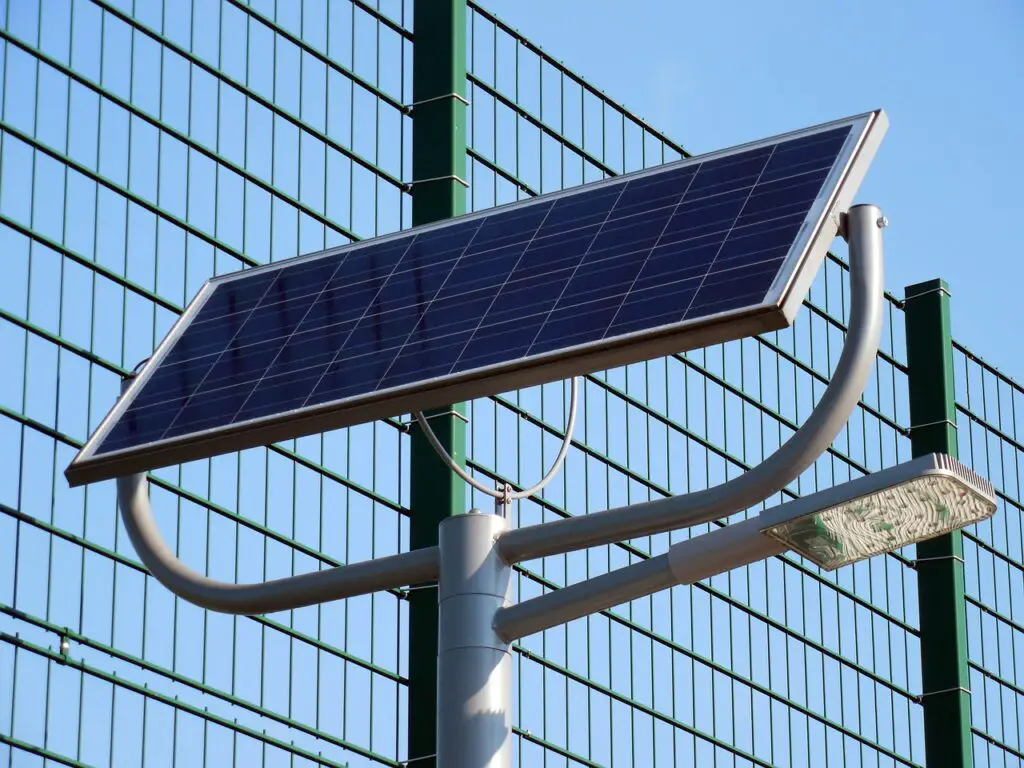Solar cell technology is an essential component in the quest for a sustainable future. As the world’s energy demand continues to grow, renewable sources like solar energy are becoming increasingly important. Solar cells, also known as photovoltaics, convert sunlight into electricity and are an essential part of solar power systems.
Recently, there has been a major breakthrough in the world of solar cell technology. A new solar cell efficiency record was set, reaching an impressive 34.5% efficiency. This is a significant achievement, as it means more electricity can be generated from a smaller area of solar cells. This is especially important as the cost of solar energy continues to decrease, making it more accessible to individuals and businesses worldwide. This new record has the potential to further accelerate the adoption of solar energy and bring us one step closer to a sustainable future.
This blog post will delve deeper into the world of solar cell technology, exploring the recent record-breaking achievement and what it could mean for the future of renewable energy. From the basic principles of solar cells to the latest developments in research and development, we will explore the exciting world of solar cell technology and its role in shaping our energy future.
Background on Solar Cell Technology

Solar cells, also known as photovoltaics, convert sunlight into electricity through a process known as the photovoltaic effect. This process occurs when photons from sunlight knock electrons into a higher state of energy, creating a flow of electricity.
There are several different types of solar cells, each with their own unique properties and characteristics. The most common type of solar cell is made of silicon, either in a single-crystalline or multi-crystalline form. Other types of solar cells include thin-film solar cells, which are made from materials such as cadmium telluride or amorphous silicon, and concentrator cells, which use lenses or mirrors to focus sunlight onto a small area of high-efficiency cells.
Currently, the use of solar energy is growing rapidly and becoming more prevalent in the industry. The cost of solar energy is decreasing, making it more accessible to individuals and businesses worldwide. According to the International Energy Agency, the installed capacity of solar energy has grown by 50% per year over the last five years. This growth is set to continue as more countries set ambitious renewable energy targets and invest in solar cell technology.
The progress in the solar cell technology has been impressive over the last few years. The efficiency of solar cells has increased which means more electricity can be generated from a smaller area of solar cells. The cost of solar energy is also decreasing, making it more accessible to individuals and businesses worldwide. These advancements in technology have led to the increased adoption of solar energy and are helping to move the world towards a more sustainable future.
The Record-Breaking Solar Cell

The recent solar cell efficiency record of 34.5% was set by a team of scientists at the National Renewable Energy Laboratory (NREL) in Colorado, USA. They achieved this record by using a new type of solar cell known as a multi-junction solar cell.
Multi-junction solar cells are made up of multiple layers of different materials, each with their own unique properties. These layers are designed to capture different wavelengths of light, allowing the cell to convert more of the sun’s energy into electricity. The team at NREL was able to achieve such a high efficiency by using a combination of materials including gallium indium phosphide, gallium arsenide, and germanium.
This breakthrough has the potential to greatly impact the future of solar energy. With higher efficiency, solar cells can generate more electricity from a smaller area, which could lead to more cost-effective solar power systems. Additionally, multi-junction solar cells can also operate at higher temperatures, which could improve the performance of solar power systems in hot climates.
Furthermore, this new development could also lead to further advancements in solar cell technology. The team at NREL hopes to continue pushing the boundaries of efficiency, with the goal of reaching 40% in the near future. This increased efficiency will not only bring down the cost of solar energy but also improve the performance of solar power systems, making it more reliable and accessible.
Overall, this new record in solar cell efficiency is a significant step forward in the quest for sustainable energy and highlights the ongoing progress and potential of solar cell technology.
The Future of Solar Cell Technology

Solar cell technology is an ever-evolving field, with researchers and scientists constantly pushing the boundaries of what is possible. There are several exciting areas of research and development currently underway that have the potential to greatly impact the future of solar energy.
One area of focus is the development of new materials for solar cells. Scientists are experimenting with new semiconductors and other materials that have the potential to increase efficiency and lower costs. For example, perovskite solar cells, which are made from a material called perovskite, have shown great promise in recent years with efficiency levels approaching those of traditional silicon solar cells.
Another area of research is in the field of concentrator solar cells, which use lenses or mirrors to focus sunlight onto a small area of high-efficiency cells. These cells have the potential to achieve efficiencies above 40%, making them a promising technology for large-scale solar power generation.
In addition to these specific areas of research, scientists and engineers are also looking for ways to improve the overall performance and reliability of solar power systems. This includes developing new ways to store and distribute solar energy, as well as improving the overall design of solar panels to make them more durable and resistant to environmental factors.
All these advancements and research going on in the solar cell technology have the potential to greatly impact the renewable energy industry. With higher efficiency solar cells, the cost of solar energy will decrease and making it more accessible to individuals and businesses worldwide. This could lead to a greater adoption of solar energy, which would bring us one step closer to a sustainable future.
It is clear that solar cell technology is an essential component in the quest for a sustainable future. With ongoing research and development, we can expect to see continued progress in solar cell efficiency and performance. This progress will help to bring down the cost of solar energy and make it more accessible to all, helping to move the world towards a more sustainable future.
Conclusion
The significance of the new solar cell efficiency record cannot be overstated. With the increasing demand for renewable energy, the advancements in solar cell technology will play a vital role in making solar energy more accessible and cost-effective. This will help to move the world towards a more sustainable future, reducing the dependence on fossil fuels and slowing down the effects of climate change.




